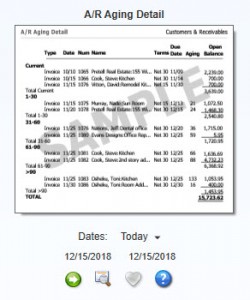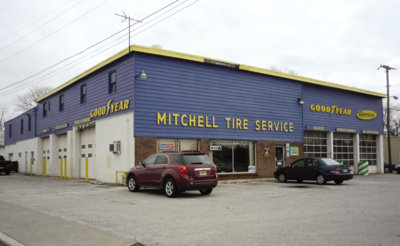After more than 30 years of owning and successfully running the town’s well-known and successful auto service business…starting out long ago as a single location and growing to multiple sites over the course of his career…Dan the Auto Man is about to make the biggest decision of his professional life. Dan has decided that it’s

You send invoices because you sold products and/or services. Purchase orders go out when you’re running low on inventory, and there are always bills to pay, it seems like. All of this activity is, of course, important in itself, but all of your conscientious bookkeeping culminates in what’s probably the most critical element of QuickBooks:

Your tire or auto service business has provided for your livelihood. It has created jobs, sales, profits, equity and marketplace visibility. And now you’re ready to move on. Maybe you’re seeking an exit right away. Maybe you’re planning for the future. Either way, and regardless of the phase you may be in regarding the sale of your shop, if you have questions about how to proceed, you’re not alone.
Due to current economic conditions, it’s likely that collecting on your accounts receivables is becoming more and more of a challenge. Strengthening your collection procedures may allow you to improve collection rates and shorten the aging days of your accounts receivables. The following suggestions will help your business improve its cash flow and tighten up its credit and collections policies.

While every transfer of business ownership is unique, unforeseen challenges – in this case, a national business recession that resulted in decreased sales and complicated by environmental and family ownership issues – can cause the selling process to drag on for what seems like forever, to the frustration of all parties involved.

I recently asked a friend in his late 50s about his plans for retirement. He told me he expected to die at his desk – and he was serious. He gave no thought to a time when he wouldn’t be in his business. Part of being a proactive business owner requires that you look a few moves down the chessboard – whether that means keeping the business in the family, turning it over to a management team so you can golf more or selling the business.
In the second of a two-part series, we delve deep into the process of selling a business by interviewing Art Blumenthal, nationwide automotive aftermarket business broker, who provides business valuations, exit planning and buying and selling adviser services. Part one of the executive interview appeared in the November/December issue of Shop Owner.

Just a few short decades ago, when Terry Flaherty was in his early 30s, he set a goal to retire at age 55. “I also set targets for what I wanted to make and my net worth at that age. So when I had been in the auto service business for 35 years as the business got tougher and tougher all the time, for me it was the right time to exit.”

Over the last 22 years, I’ve been amazed to discover just how many shop owners are lost when it comes to knowing and understanding “the numbers.” In order to build a successful auto repair shop, you are going to need to know two sets of numbers: your “financial” benchmarks, and your “operational” benchmarks.


